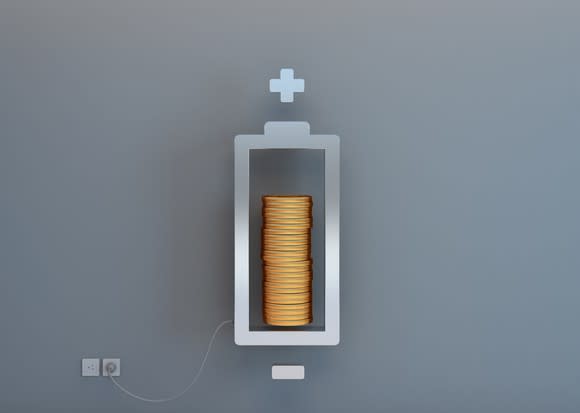Will These Fuel Cell Stocks Succeed in China?
Management teams across the fuel cell industry are attempting to position their businesses to capitalize on several global trends. Listen to a conference call or investor presentation and you'll notice a handful of recurring themes.
Forklift operators are finding it easier to switch to hydrogen fuel cells, especially when they operate in the food handling industry, where diesel exhaust is forbidden. There's also a sweeping desire of transportation companies to at least experiment with fuel cell technology, which promises to make everything from personal transportation to heavy-duty trucking considerably cleaner. But there's one mega trend that companies are eager to exploit: fast-growing markets in China.
That may not be surprising to investors considering the massive Chinese market has lifted diverse sectors and industries in the last two decades, but China may prove critical to the success of struggling fuel cell stocks. Can Ballard Power Systems (NASDAQ: BLDP) and Plug Power (NASDAQ: PLUG) capitalize on the opportunity in the East?

Image source: Getty Images.
An important commercial testing ground
Ballard Power Systems is currently running laps around the competition when it comes to gaining customers in China. The company will see 500 licensed fuel cell commercial trucks powered by its technology hit the road in Shanghai this year, which could demonstrate the viability of the technology to customers around the world. It's part of a joint venture with Guangdong Nation-Synergy Hydrogen Power Technology that's called Guangdong Synergy Ballard Hydrogen Power.
In September 2017, the JV opened a production facility in China that will one day have the capacity to manufacture up to 20,000 fuel cell stacks per year, according the partners. (Stacks are what comprise a fuel cell device. The more power-hungry the application, the more stacks that are required.) The production facility will have an initial annual capacity of 6,000 stacks per year, which will go a long way to servicing the heavy-duty trucking market.
However, as is often the case when doing business in China, Ballard Power Systems gave up majority control of the JV in order to gain access to the Chinese market. In this case, it only owns a 10% interest in the newly formed company. That means the fuel cell leader's direct success will ultimately come down to production volumes. It will supply the JV with crucial components for each fuel cell stack manufactured in a "take or pay" contract with minimum annual requirements that total $150 million from 2017 to 2021.
Whether or not that properly values the company's technical contribution -- or the world's largest deployment of fuel cell-powered trucks -- is open for debate. That said, the business's positive gross margin today and customers spread from Canada to Germany to the United States show that Ballard Power Systems may be relatively well-positioned to play the long game in China. And if success there leads to contracts elsewhere, then the JV could pay dividends down the road, albeit more indirectly.

Image source: Getty Images.
Meanwhile, Plug Power has yet to break into the Chinese market, but it plans on getting a foot in the door soon. On the first-quarter 2018 conference call, management told investors that it has been evaluating several potential JV partners in the country and expects to formally announce its selection by the end of the year.
Whether a Chinese JV provides the same opportunity for Plug Power to prove its technology package as it did for Ballard Power Systems remains to be seen, but the head-to-head numbers suggest there are two ways to look at it. The pessimist would say that the larger fuel cell supplier has many more shots on goal and has posted gross profits for the past 10 years, therefore there's no way for the smaller player to replicate that success. The optimist would say a Chinese JV can only provide upside.
Whereas Ballard Power Systems can talk about buses in Germany and submarines funded by Canada, the smaller peer is still mostly stuck powering forklifts in warehouses. While that business might be turning the corner, more robust metal plate stacks, which are suitable for more power-hungry applications such as transportation, are coming down the pipe. In other words, Plug Power might be on the cusp of moving up the value chain to larger markets -- and China could be a big part of that.
Management has hinted that it's in no rush to move into China just for the sake of doing so. Rather, it wants to ensure the terms are favorable for shareholders and the business: "Plug Power's goal is to have a partner with strong market access and internal demand, that will allow the Company to have a significant ownership position with protective governance rights and a partner committed to the long term."
There a any number of ways to interpret "strong market access" and "internal demand." Will that be another warehouse owner? That could help the material-handling business achieve profits and positive cash flow and diversify revenue away from its two largest customers, which provide 71% of all sales. Or will it be a company in trucking or automobiles? That could help lay the foundation for future applications and provide a commercial testing ground for deploying the technology elsewhere. For now, investors can only wait.

Image source: Getty Images.
Success in China could mean success for investors
Historically speaking, fuel cell stocks have been downright awful investments. They've been high on hype and low on execution, largely due to undeveloped markets and a lack of commercial traction. So although investors could have been pretty bearish on the technology's prospects to date, the last two quarters of performance from Ballard Power Systems and Plug Power do hint at a possible path forward for sustainably profitable operations in the coming years. However, until that happens, individual investors should maintain a "show me" approach to the industry from the safety of the sidelines, while knowing China could accelerate each business's long-term success.
More From The Motley Fool
Maxx Chatsko has no position in any of the stocks mentioned. The Motley Fool has no position in any of the stocks mentioned. The Motley Fool has a disclosure policy.

 Yahoo Finance
Yahoo Finance 